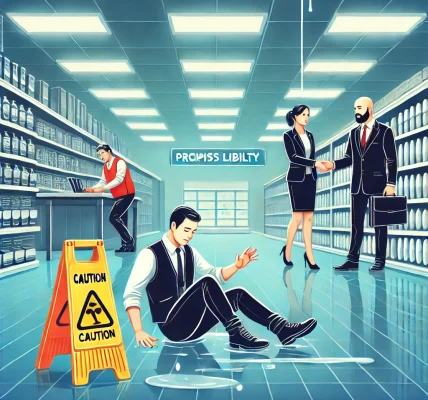Introduction
When people think about personal injury cases, they often focus on physical injuries such as broken bones, burns, or whiplash. However, not all injuries are visible. Emotional distress, including anxiety, depression, and post-traumatic stress disorder (PTSD), can be just as debilitating as physical harm. But can you sue for emotional distress in a personal injury case? The answer is yes, but the process can be complex. This article will explain when and how you can file a claim for emotional distress, what evidence is required, and how to maximize your compensation while staying within legal guidelines.
What Is Emotional Distress in Legal Terms?
Emotional distress refers to the psychological impact of an accident or injury. This can include:
- Anxiety and panic attacks
- Depression
- PTSD
- Sleep disturbances
- Fear and phobias (such as fear of driving after a car accident)
- Loss of enjoyment of life
In legal terms, emotional distress falls under non-economic damages, meaning damages that do not have a direct financial cost but significantly impact the victim’s well-being.
When Can You Sue for Emotional Distress?
Not every case qualifies for an emotional distress claim. Courts typically allow these claims under the following circumstances:
1. Accompanied by Physical Injury
Many personal injury claims involving emotional distress also include physical injuries. If you suffered a physical injury due to someone else’s negligence, you might be able to claim emotional distress as a secondary damage.
2. Intentional Infliction of Emotional Distress (IIED)
If the defendant’s actions were extreme, outrageous, or intentionally harmful, you could sue for Intentional Infliction of Emotional Distress (IIED). Examples include harassment, assault, or public humiliation.
3. Negligent Infliction of Emotional Distress (NIED)
If the defendant was careless and caused you severe emotional trauma, you may be able to sue for Negligent Infliction of Emotional Distress (NIED). Common cases include witnessing a loved one’s severe injury or death due to negligence.
Proving Emotional Distress in Court
Unlike physical injuries, emotional distress is not visible, making it more challenging to prove. Courts typically require substantial evidence, including:
- Medical Records: Therapy or psychiatric treatment records can prove that you suffered from emotional distress.
- Expert Testimony: A mental health professional’s testimony can validate your claims.
- Personal Testimony: Your own account of how the emotional distress has affected your daily life.
- Witness Statements: Friends, family, or coworkers can provide statements confirming changes in your behavior and mental health.
- Journals or Diaries: Keeping a written record of your emotional suffering can strengthen your case.
How Much Compensation Can You Get for Emotional Distress?
The compensation for emotional distress varies widely depending on:
- The severity of your psychological symptoms
- The duration of your emotional distress
- The strength of your evidence
- The jurisdiction (laws differ from state to state)
Some courts use the Multiplier Method, where your economic damages (such as medical bills and lost wages) are multiplied by a number (typically between 1.5 and 5) to determine non-economic damages. Others use the Per Diem Method, assigning a daily monetary value to your suffering.
Challenges in Filing an Emotional Distress Claim
Filing an emotional distress claim can be difficult due to:
- Skepticism from Insurance Companies: Many insurers are reluctant to pay for emotional distress damages without strong evidence.
- Legal Limitations: Some states have strict laws about when emotional distress claims are valid.
- Proving Causation: You must prove that your emotional distress directly resulted from the defendant’s actions.
How to Strengthen Your Emotional Distress Claim
If you plan to pursue an emotional distress claim, follow these steps:
- Seek Medical Help: Seeing a therapist or psychiatrist not only helps your mental health but also provides necessary documentation.
- Keep a Journal: Document your symptoms and how they impact your daily life.
- Gather Witness Statements: Friends, family, or colleagues can support your claim.
- Hire an Experienced Lawyer: A personal injury attorney can help you navigate the complexities of your case.
- Be Careful with Social Media: Avoid posting anything that contradicts your claim, as insurers and defense attorneys may use it against you.
Conclusion
Yes, you can sue for emotional distress in a personal injury case, but proving it requires strong evidence and legal expertise. If you have suffered significant psychological harm due to someone else’s negligence or intentional actions, consulting an experienced attorney can help you determine your best course of action. By understanding your rights and building a strong case, you can maximize your chances of receiving fair compensation for your suffering.
If you need legal assistance with an emotional distress claim, contact a personal injury lawyer to evaluate your case and guide you through the legal process.




